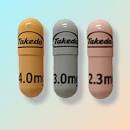
Recently Diagnosed or Relapsed? Stop Looking For a Miracle Cure, and Use Evidence-Based Therapies To Enhance Your Treatment and Prolong Your Remission
Multiple Myeloma an incurable disease, but I have spent the last 25 years in remission using a blend of conventional oncology and evidence-based nutrition, supplementation, and lifestyle therapies from peer-reviewed studies that your oncologist probably hasn't told you about.
Click the orange button to the right to learn more about what you can start doing today.
- You are here:
- Home »
- Blog »
- Multiple Myeloma »
- Revlimid, Ninlaro, Dexamethasone (IRd) vs. Antineoplastons- Multiple Myeloma
Revlimid, Ninlaro, Dexamethasone (IRd) vs. Antineoplastons- Multiple Myeloma
“Among the (MM) patients not proceeding to SCT, AEs led to dose reductions in 27 (64%) patients, of whom 9 (21%), 19 (45%), and 16 (38%) required Revlimid, Ninlaro and Dexamethasone dose reductions”
Hi David- I was diagnosed with Multiple Myeloma (MM) in May this year. Revlimid, Ninlaro and Dexamethasone ((IRd) have taken me from 70% invasive MM to 5% as of today. I am wondering about Antineoplaston therapy (ANP).
From reading below it seems you don’t necessarily recommend Burzynski if things are controlled by medications such as revlimid. Correct?
How long did you require treatment with antineoplaston therapy (ANP) to achieve the incredible remission you’ve had? Did you do oral or IV treatment?
FYI, just contacted the Burzynski Clinic and it is currently (2019) $7000 per month for oral and $17,000 per month for IV. No insurance accepted. Doesn’t include travel, tests, etc. Not everyone gets the option of choosing which treatment. Depends on your genetic work up. Ronda
Hi Ronda-
- MM Survivor
- MM Coach
- Director PeopleBeatingCancer
Recommended Reading:
Ixazomib, lenalidomide, and dexamethasone in patients with newly diagnosed multiple myeloma: long-term follow-up including ixazomib maintenance
“Twenty-three patients discontinued induction for stem cell transplantation (SCT). In the remaining 42 patients, overall response rate was 80%, including 63% ≥very good partial response (VGPR) and 32% complete responses. At a median follow-up of 56 months, median progression-free survival (PFS) was 35.4 months in the total population…
Among the patients not proceeding to SCT, AEs led to dose reductions in 27 (64%) patients, of whom 9 (21%), 19 (45%), and 16 (38%) required ixazomib, dexamethasone, and lenalidomide dose reductions, respectively. Overall, the most common treatment-emergent AEs leading to dose reduction were fatigue (19%), PN (12%), diarrhea, insomnia, and weight increase (10% each). AEs leading to discontinuation of study treatment were reported in 9 patients…
Antineoplaston therapy
“Antineoplaston therapy is a type of alternative treatment. There is not enough reliable evidence that it can help to treat cancer.
Summary
- Antineoplastons are found in urine and blood.
- There is not enough reliable evidence to use it as a cancer treatment.
- Antineoplaston therapy has side effects.
What are antineoplastons?
Antineoplastons are chemical compounds found normally in blood and urine. They are made up of amino acids and peptides. Amino acids are the building blocks of protein. Peptides are made up of two or more amino acids.
Why people with cancer use it
Dr Burzynski developed antineoplaston therapy in the 1970s. He believes that:
- antineoplastons are part of the body’s natural defence
- it can protect against cancer
- people with cancer don’t have enough of them
At first, he took these compounds out of urine and blood. It’s now possible to make them in the laboratory.
Dr Burzynski’s clinic has studied different types of cancer. The Food and Drug Administration (FDA) in America has not approved antineoplaston therapy as a treatment for cancer or any other disease.
There is not enough scientific evidence on antineoplaston therapy. So, researchers can’t say it works as an alternative cancer therapy.


